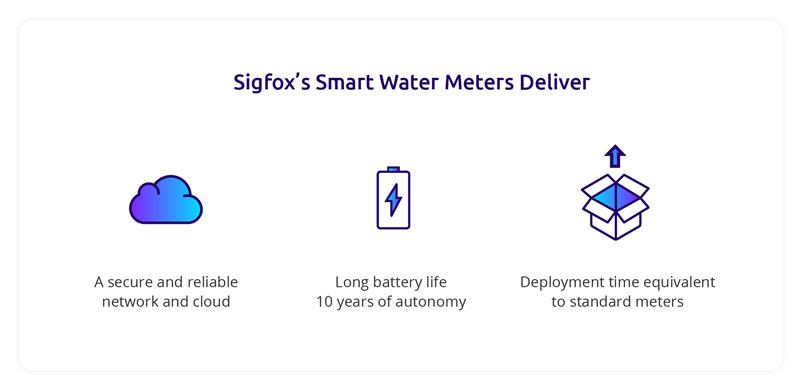Sigfox-enabled Long-Range Telemetry Solutions Eliminate the Need for Onsite Meter Readings
As any utility manager knows, dispatching staff to manually read water meters is both time consuming and a logistical headache. First-generation telemetry solutions have made a small difference by allowing utility companies to take remote readings from short distances. But with ranges of only a few meters, these solutions still require considerable manpower, not to mention fuel and vehicle maintenance costs. As an alternative to short-range telemetry, utility companies across the globe have discovered smart water meters, which virtually eliminate the need for onsite meter readings.
Thanks to long range communication capabilities, utility companies realize significant time and cost savings by switching to smart water meters. With their old, non-connected system, utility companies are only able to read meters annually. This process takes a lot of time to complete. By connecting smart meters to Sigfox’s global IoT network, utility companies eliminate the need for onsite water meter readings. They save weeks and even month in manpower.
Utility Companies Recoup Additional Costs by Remotely Deactivating Water Service
In many cases, the advanced technology in smart water meters also allows utility companies to remotely activate and deactivate service for individual households. Because water supplies can be remotely shut off or reduced in the event of customer nonpayment, utility companies are able to more easily recoup costs without the hassle of manual water shutoff.
Some utility companies have even begun to offer prepaid options for customers, especially those who are at a high-risk for nonpayment. With easy access to information about their own water consumption, customers stay informed so that they can remain within their prepaid water use limits. If prepaid limits are reached, utility companies can easily discontinue water service.

Reductions in manpower, fuel and vehicle maintenance costs mean powerful savings for utility companies that upgrade to smart water meters. The meters are simple to install and do not require technician training or network configuration. In fact, installation time is roughly equivalent to that of standard water meters. As a result, most utility companies encounter few barriers to deployment. Retrofitting current systems is also an option in situations where a full upgrade is not necessary. For most utility companies, especially those already in need of a system overhaul, this high return-on-investment makes the choice to switch an easy decision.
